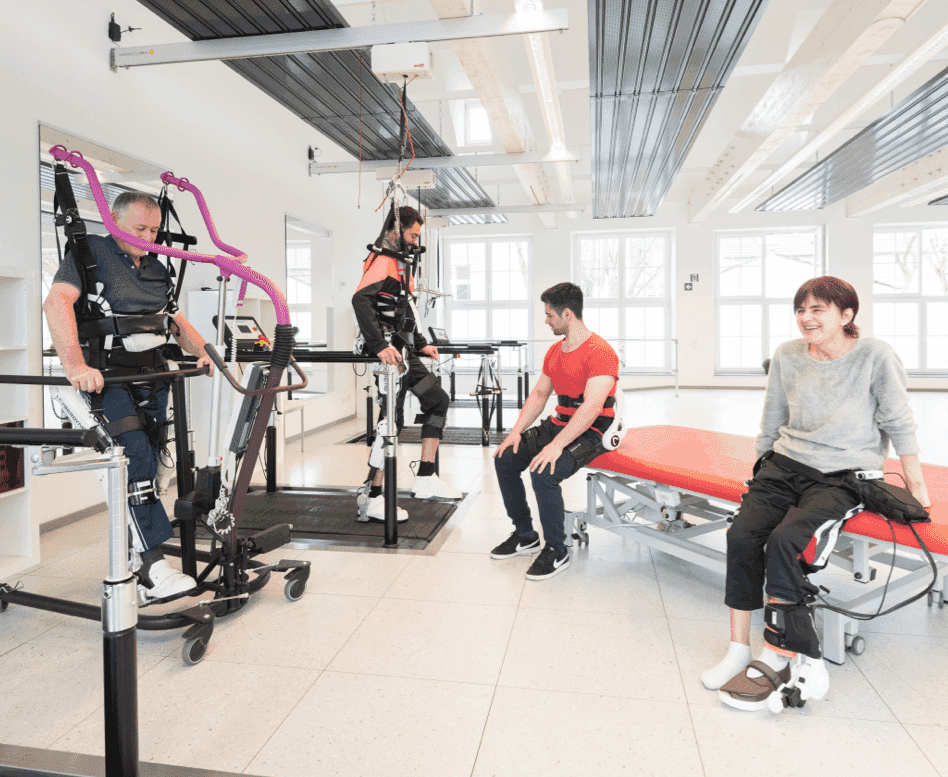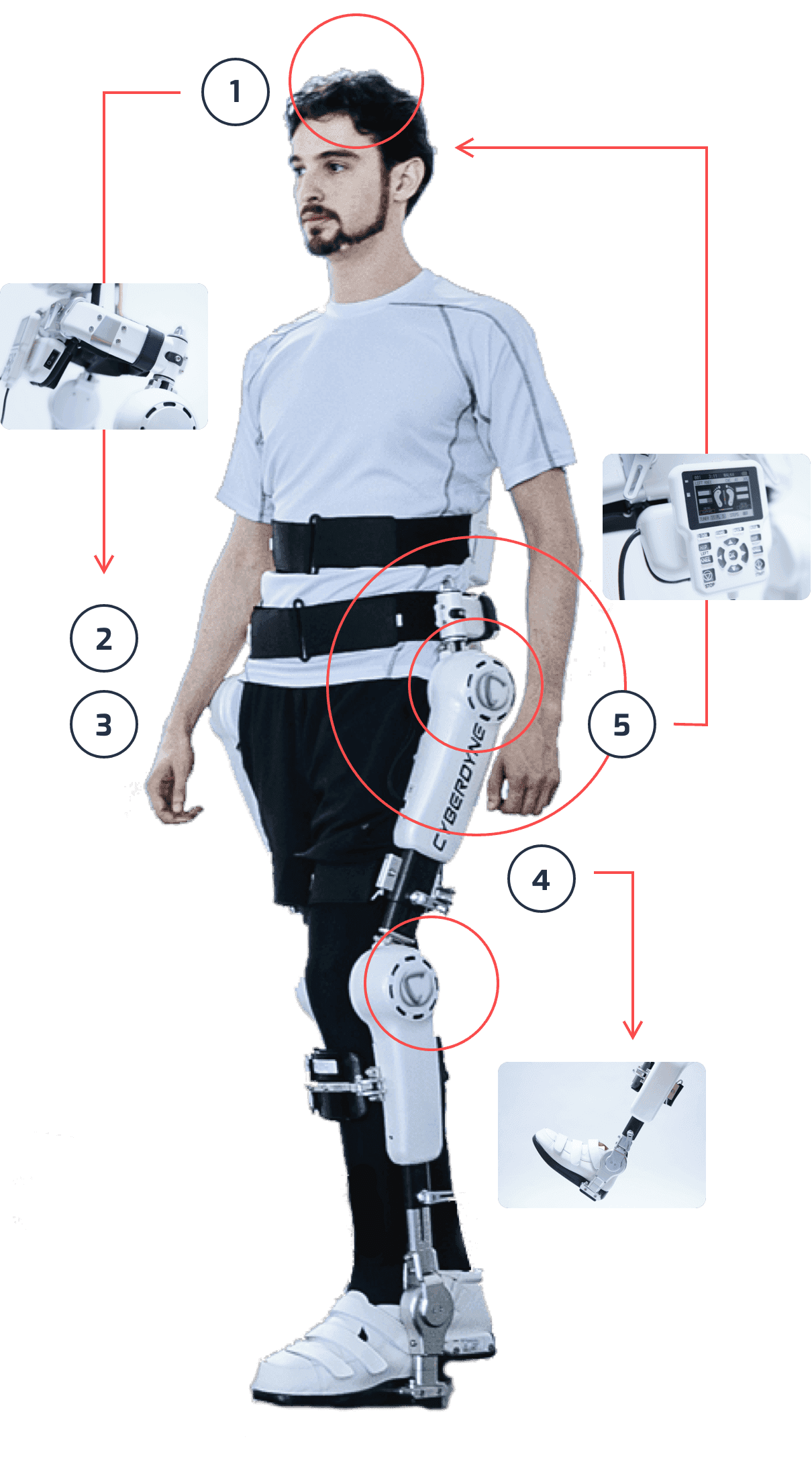Medical Cybernics Technology
When a person tries to move, signals sent from brain to the muscles trickle onto the surface of the skin as very faint bio-electrical signals, and HAL is capable of detecting these signals and consolidates various information to complete the motion of patients. As a result, a neurological loop of afferent and efferent neurons is established between brain and muscle through HAL.

How HAL Works
Our intention to move triggers bio-electrical signals (BES) from the brain that communicate with the muscles that make locomotion possible.
Such signals from paralyzed patients may be too weak to trigger proper movement. However, HAL can sensor faint BES that trickle onto the skin, process it, and simultaneously assist one’s desired movement with motors located on each hip and knee joint.
More importantly, the brain receives feedback from the target muscle through the sensory system and learns how to move legs correctly after repetition of dedicated HAL gait training.
- Support, assist, enhance, and regenerate
- Interactive bio-feedback loop is established
- Neurologically controlled by wears' intention
1
Send
The brain sends command signals. When a person tries to move their body, the brain transmits necessary signals through the nerves to the muscles.
2
Receive
The muscles receive the command signals. Each muscle contracts to move its corresponding joint when it receives the appropriate command signal sent from the brain through the nerves. With a spinal cord injury, this pathway is disrupted and the signal is too weak to generate sufficient force.
3
Read
HAL reads the signals. Signals sent to the muscles by the brain trickle onto the skin surface as very faint bio-electrical signals (BES). HAL is capable of detecting these signals and consolidating this information with other information collected by the device to recognize and complete the intended motion of patients.
4
Move
HAL moves as the wearer intends. HAL controls the power units at each joint independently based on these BES and allows the wearer to perform the desired movements with their voluntary commands.
5
Feedback-loop
Information of movement is sent back to the brain. When HAL has appropriately assisted the intended movement, the feeling is fed back to the brain. As a result, a neurological loop of afferent and efferent neurons is established between the brain and the muscles through HAL. The use of this network of signals to induce neuroplasticity is what we call “interactive bio-feedback”. Active use of these neural pathways for voluntary movement with physical feedback to the brain leads to an improved ability for the wearer to walk on their own.

Learn more about our products
Think, Send, Read, Move—HAL is the World first neurologically controlled wearable Cyborg which puts your intentions into action. HAL improves locomotor activity in stroke, spinal cord injury and other neuromuscular disease patients.
Learn moreHAL Single Joint is a portable and lightweight unit which enables intensive and repetitive training of specific joints such as elbow, knee, and ankle.
Learn moreImproving a quality of life by ensuring your well-being, reducing fatigue in the work environment, regaining your strength and mobility, and expanding your capability.
Learn moreKeeping large facilities such as airport, shopping malls, hotels, and conference centers clean has never been easier. Find out how our cleaning and disinfection robot keeps your space tidy without the need for human operation.
Ingenious interfaces for people including those suffer from progressive neurodegenerative disease. CYIN utilizes biological information to help communicate with ease, despite all their limitations.
Acoustic X is photoacoustic imaging technology that helps detect melanin, lipid, collages, water, and contrast agents specifically designed to locate various biomarkers.